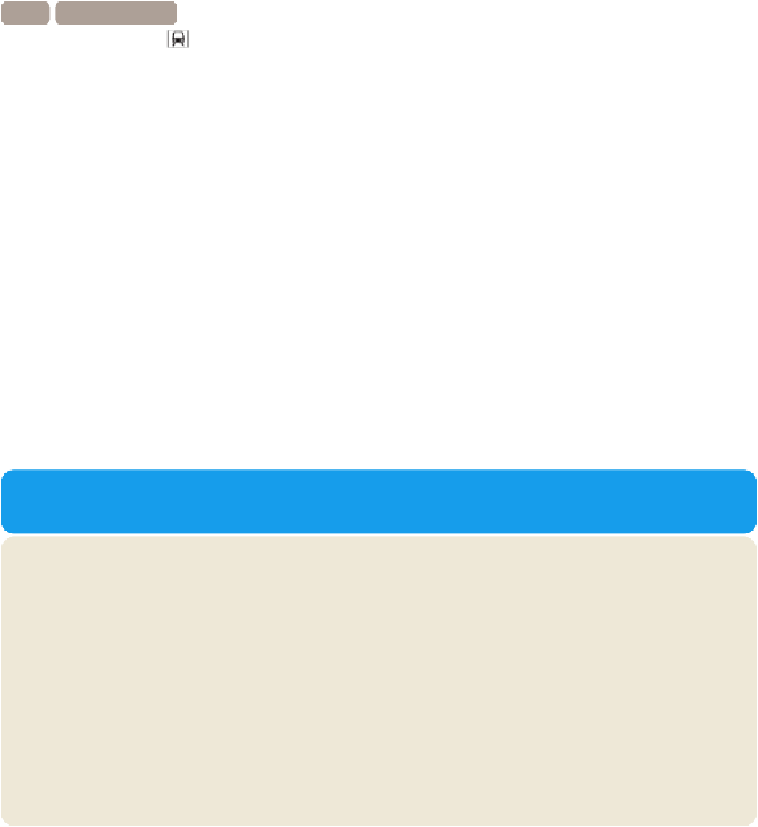Travel Reference
In-Depth Information
Association of South East Asian Nations (ASEAN). The forested hills behind the monu-
ment are slated for development into the
Malaysia Truly Asia Centre
over the coming years.
KL TRAIN STATION
(Jln Sultan Hishamuddin; Kuala Lumpur)
Opened with much pomp and circumstance in 1911 to
receive trains from Butterworth and Singapore, KL's old train station, another of AB Hub-
bock's Moorish-inspired fantasies, is a wonderful confection of turrets and towers. In
2001 the station was replaced as the city's main transport hub by KL Sentral. Today the
platforms are mainly used for KTM Komuter trains to the suburbs and further afield to
Seremban and Ipoh. It's looking dishevelled and forlorn, but it's still worth coming here to
imagine the glory days. The station's fanciful architecture is mirrored by the Malayan
Railway Administration Building across the road.
HISTORIC BUILDING
NATIONAL PARLIAMENT
(
www.parlimen.gov.my
;
Jln Parlimen; closed to public; KL Sentral, then taxi)
Opened on 2 November
1963, the William Ivor Shipley-designed National Parliament creates a striking impres-
sion. Sometimes nicknamed the 'toast rack', the complex's rectilinear design features a
debate chamber crowned with a modern interpretation of a Malay house roof, crafted in
concrete rather than wood.
LANDMARK
TOP SIGHTS
NATIONAL MUSEUM
Housed in a building with a distinctive Minangkabau-style roof, this museum is one of the city's best. A major
renovation has resulted in four main galleries with interesting, well-organised displays: Early History, where
you'll find the bones of Perak Man; Malay Kingdoms, including the history of the Melakans; Colonial Era, from
the Portuguese through to the Japanese occupation; and Malaysia Today, which charts the country's post-WWII
development.
There are more things to see outside, including a regularly changing exhibition (extra charge) and a couple of
small free galleries: the
Orang Asli Craft Museum
and
Malay World Ethnology Museum
, which has good dis-
plays of batik and other fabrics.
Time your visit to coincide with one of the free
tours
( 10am Mon-Thu & Sat in English; Tue & Thu in
French, Thu in Japanese) given by enthusiastic volunteer guides. Also don't miss admiring the pair of giant
friezes
flanking the front entrance. Designed by Cheong Lai Tong and made of Italian mosaic glass, they depict
scenes from Malaysian life and history.





